A Rare Merovingian Bronze Fish Brooch with Original Garnet and Gold
A Rare Merovingian Bronze Fish Brooch with Original Garnet and Gold ‘Appliqué’ Inlay
Bronze, gold, garnet, coloured glass
France
6th–8th Century AD
Size: 2cm high, 6cm wide, 1cm deep - ¾ ins high, 2¼ ins wide, ¼ ins deep
Bronze, gold, garnet, coloured glass
France
6th–8th Century AD
Size: 2cm high, 6cm wide, 1cm deep - ¾ ins high, 2¼ ins wide, ¼ ins deep
A Rare Merovingian Bronze Fish Brooch with Original Garnet and Gold ‘Appliqué’ Inlay
Bronze, gold, garnet, coloured glass
France
6th–8th Century AD
Size: 2cm high, 6cm wide, 1cm deep - ¾ ins high, 2¼ ins wide, ¼ ins deep
Bronze, gold, garnet, coloured glass
France
6th–8th Century AD
Size: 2cm high, 6cm wide, 1cm deep - ¾ ins high, 2¼ ins wide, ¼ ins deep
note: Adolphe Stoclet was a wealthy Belgian engineer, financier, and noted collector, who was married to the daughter of the art critic, historian, collector, and dealer Arthur Stevens (1825 - 1909) and niece of the painter Alfred Stevens (1823 - 1906). Through her father and uncle, the Stoclet’s were connected with avant-garde art circles in Paris. They lived in Italy and especially in Vienna, where they met Josef Hoffmann (1870 - 1956), who designed Stoclet’s famous house in Brussels. Gustav Klimt (1862 - 1916) painted the murals in its dining room. The Palais Stoclet was the lavish setting for an eclectic art collection that appealed to the latest avant-garde tastes. This included Egyptian and Chinese sculpture; late medieval Italian painting; medieval metalwork, enamels, and relics; Byzantine art; Pre-Columbian art; Japanese, Cambodian, and Tibetan art.
The Merovingian dynasty (5th century to 751 AD) grew out of the Roman army of northern Gaul, who united the Franks and Gallo-Romans under their rule. Their landmass extended from Germany in the east to Spain and from Italy in the south to Flanders in the north. Of course the emergence of these countries came later, during the Middle Ages, emerging from the ruins of the Roman Empire.
Fibulae, brooches, buckles and repoussé decorations formed an important part of Merovingian ‘dress’, with the more elaborate and precious materials worn by those of high rank. The craftsmen were so highly regarded that the glass makers and stonemasons were brought to Britain, where certain skills had been lost since the fall of the Roman Empire, including that of glass-making!
The Merovingian dynasty (5th century to 751 AD) grew out of the Roman army of northern Gaul, who united the Franks and Gallo-Romans under their rule. Their landmass extended from Germany in the east to Spain and from Italy in the south to Flanders in the north. Of course the emergence of these countries came later, during the Middle Ages, emerging from the ruins of the Roman Empire.
Fibulae, brooches, buckles and repoussé decorations formed an important part of Merovingian ‘dress’, with the more elaborate and precious materials worn by those of high rank. The craftsmen were so highly regarded that the glass makers and stonemasons were brought to Britain, where certain skills had been lost since the fall of the Roman Empire, including that of glass-making!
Provenance:
Ex Adolphe Stoclet (Belgium 1871 - 1949)
Thence by descent to a UK family member
Ex Adolphe Stoclet (Belgium 1871 - 1949)
Thence by descent to a UK family member
A Rare Merovingian Bronze Fish Brooch with Original Garnet and Gold
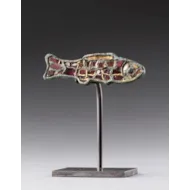
SOLD
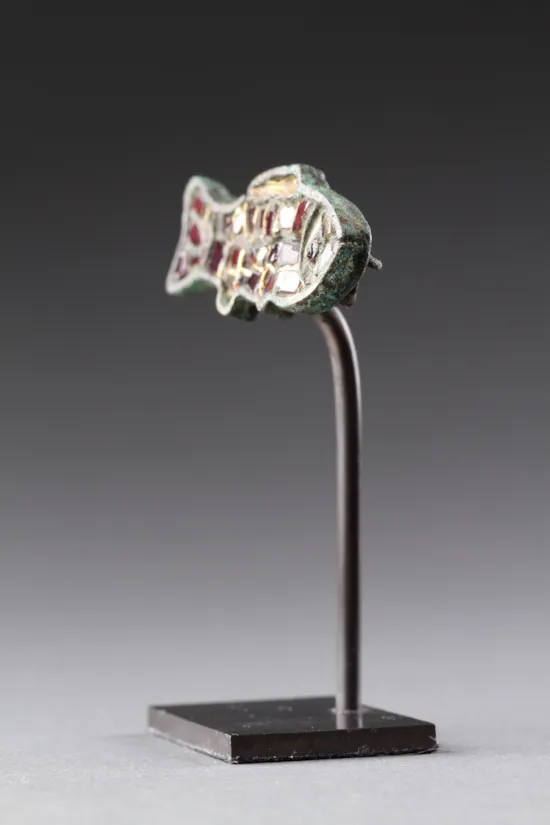
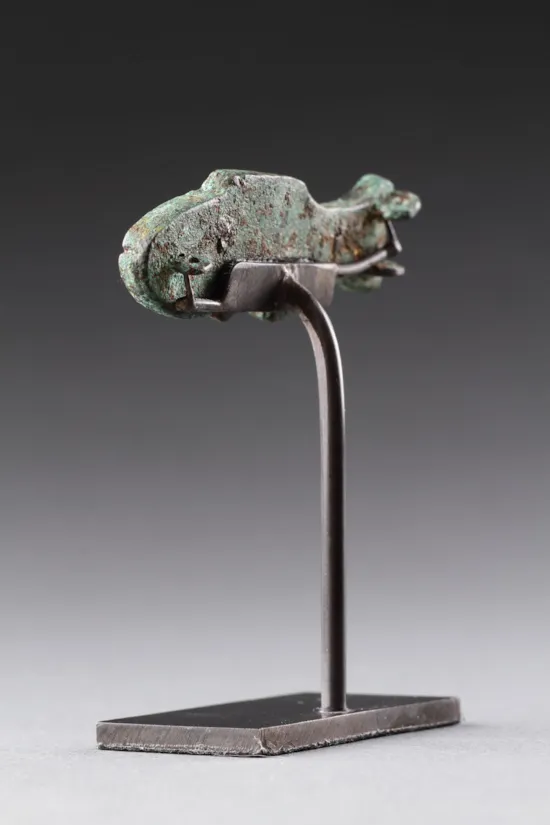
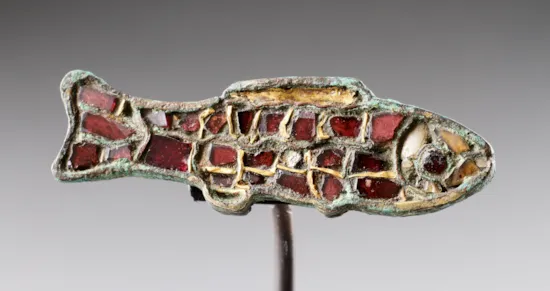
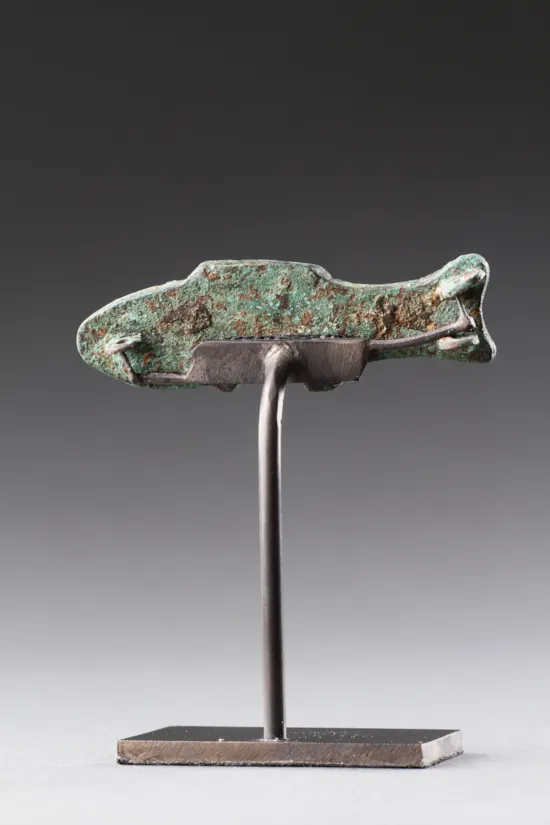




YOU MAY ALSO LIKE

